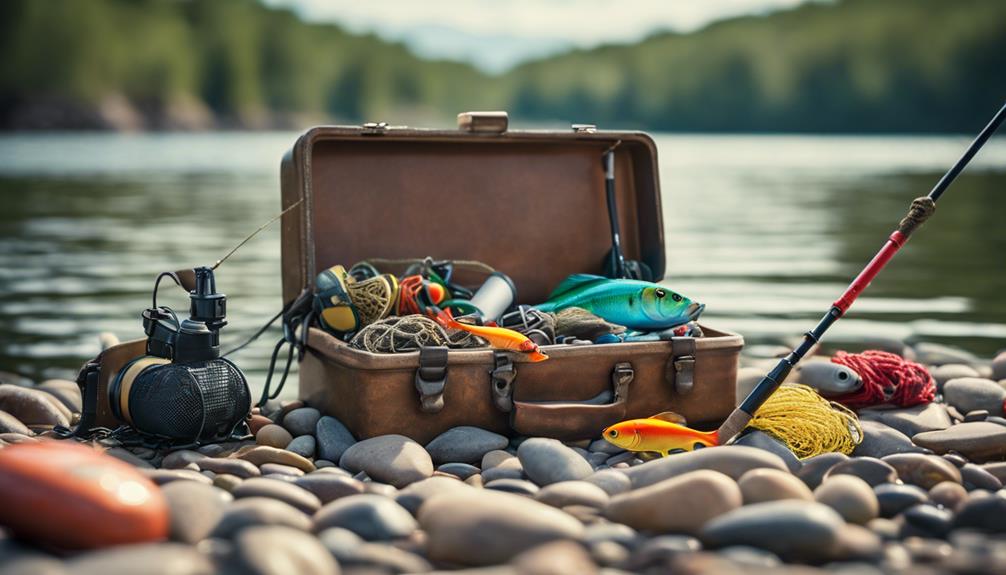Fishing is not just a recreational activity; it’s an art, a science, and a way to connect with nature. For many, it’s a cherished pastime that provides both relaxation and the thrill of the catch. If you’re wondering how to fish and are ready to embark on this rewarding journey, you’re in the right place. This guide will equip you with essential tips, techniques, and knowledge to get started on your fishing adventure.
Understanding the Basics of Fishing
Before diving into the specifics of how to fish, it’s crucial to grasp the fundamentals. Fishing involves catching fish for food or sport using various methods. The most common types of fishing include freshwater fishing, saltwater fishing, fly fishing, and ice fishing. Each type has its unique techniques and requires different gear. Understanding these basics will help you choose the right fishing style for your interests and environment.
To begin with, familiarize yourself with the types of fish you want to catch and their habitats. For example, freshwater fish like bass and trout are often found in lakes and rivers, while saltwater species like tuna and marlin inhabit oceans. Research local fishing regulations, including license requirements and catch limits, to ensure you adhere to legal guidelines.
Choosing the Right Fishing Gear
Selecting the appropriate fishing gear is essential for a successful outing. When learning how to fish, you’ll need to invest in some basic equipment, including a fishing rod, reel, line, hooks, and bait. The type of gear you choose should match the fishing method and target species.
For beginners, a spinning rod and reel combo is a versatile and user-friendly option. This setup allows for easy casting and retrieval, making it ideal for various fishing environments. Additionally, consider the fishing line’s strength and type, which can vary depending on the fish size and water conditions. As you gain experience, you can explore more specialized equipment suited for specific types of fishing.
Mastering Fishing Techniques
Once you have your gear ready, it’s time to dive into fishing techniques. The method you choose will depend on your fishing style and the type of fish you’re targeting. Some popular techniques include baitcasting, trolling, and fly fishing.
Baitcasting, for instance, is great for catching larger fish using live or artificial bait. This technique requires practice to master the casting motion, but it’s highly effective. Trolling involves pulling a baited line behind a moving boat, which can be particularly successful for catching fish in deeper waters. Fly fishing, on the other hand, uses lightweight lures that mimic insects, requiring a different casting technique.
Choosing the Right Bait and Lures
Bait selection is a critical aspect of how to fish effectively. Depending on the species you’re targeting, you may choose live bait, such as worms or minnows, or artificial lures that mimic the movement and appearance of prey.
Live bait is often more appealing to fish and can yield better results, especially for beginners. However, artificial lures come in various shapes, sizes, and colors, allowing you to experiment until you find what works best. Research the preferred bait for your target species and adjust your approach based on local conditions and seasonal changes.
Understanding Fishing Locations and Conditions
Where you fish can significantly impact your success. Different locations offer unique fishing experiences, and understanding these environments is key. Freshwater fishing spots include lakes, rivers, and streams, while saltwater fishing can occur from piers, boats, or beaches.
Pay attention to the time of year and weather conditions, as fish behavior changes with the seasons. Early mornings and late afternoons are often the best times to fish, as fish are more active. Additionally, factors like water temperature, clarity, and current can influence fish location and feeding habits.
Practical Tips for Beginners
As a beginner, there are several practical tips to enhance your fishing experience. First, consider going fishing with an experienced angler who can teach you the ropes. Learning from someone with hands-on experience can provide valuable insights that you won’t find in books.
Also, be patient and persistent. Fishing can sometimes be unpredictable, and it may take time to catch your first fish. Don’t get discouraged if things don’t go as planned; each outing is an opportunity to learn and improve your skills. Additionally, keep a fishing journal to track your experiences, catches, and the conditions on each outing. This will help you identify patterns and increase your chances of success in the future.
Safety and Conservation in Fishing
While learning how to fish, it’s essential to prioritize safety and conservation. Always wear a life jacket when fishing from a boat, and be mindful of your surroundings. Bring along sunscreen, a first aid kit, and plenty of water to stay hydrated.
Conservation is also a crucial aspect of fishing. Follow local regulations regarding catch limits and sizes, and practice catch-and-release whenever possible to help maintain fish populations. Respect the environment by cleaning up after yourself and avoiding littering in natural spaces. By being a responsible angler, you contribute to the sustainability of fishing for future generations.
Conclusion: Embrace the Fishing Journey
Now that you have a comprehensive understanding of how to fish, it’s time to put your knowledge into practice. Fishing is a journey filled with learning, exploration, and connection with nature. Whether you’re casting your line from a quiet lakeside or battling the waves in the ocean, each fishing trip offers a unique experience.
Remember, the key to becoming a proficient angler lies in practice, patience, and a willingness to learn. As you venture into the world of fishing, embrace the adventure, enjoy the tranquility of nature, and celebrate each catch, no matter how big or small. Happy fishing!
